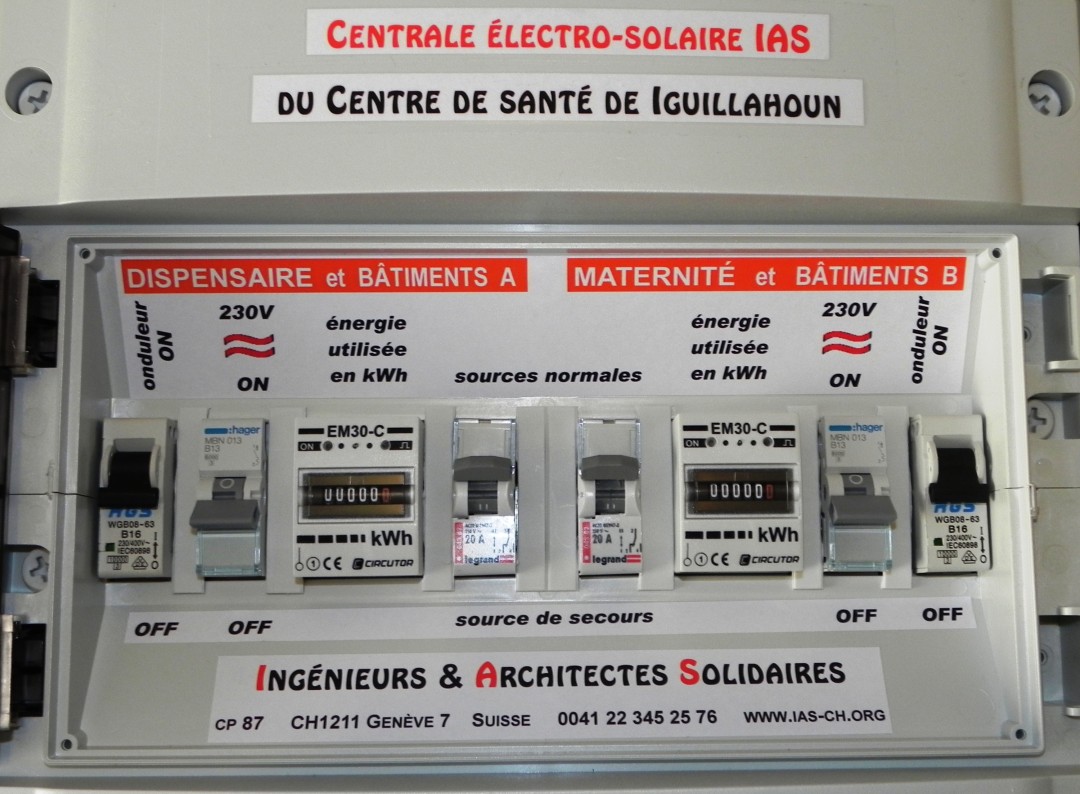Solar electricity for a health centre
The project aimed to provide the Ilguillahoun Health Centre in Southern Benin with a stand-alone solar powered system capable of providing lighting for the buildings and electricity for essential equipment. This installation was to prevent the power failures that remain a serious issue for public services, particularly health clinics, hospitals and other health centres. Benin is well suited to solar energy.
The electro-solar power station was put into service in November 2011, with the initial follow-up and final reports completed in 2012. During the project, it was necessary to build an exterior/outdoor structure to support the solar panels, as the roofs of the buildings were not strong enough to support them. The local authorities expressed their satisfaction with the installation and wrote to the president of Ingénieurs et Architectes Solidaires (IAS): “Thanks to this power, you have enabled health workers to operate in good conditions and in a secure environment”.
The Swiss association Ingénieurs et Architectes Solidaires (IAS) brings together professionals and students who are interested in alternative technologies. It works on a voluntary basis to install systems that are adapted to developing countries that lack energy resources.
Type
Health / Community Development / EnvironmentDuration
April 2011 – March 2012Location
Ilguillahoun / BeninWith whom
Ingénieurs et Architectes Solidaires (IAS)
Website

Benin
Population
11.2 million (2017)
Per Capita Income
USD 800/year (2017)
Poverty rate *
40% (2015)
Literacy rate
33% (2016)
Human Development Index
163rd out of 189 countries (2018)
Benin has implemented important economic and structural reforms over the past decade leading to notable improvements in human development. Despite moderate GDP growth, 4 to 6% per year over the past two decades, poverty remains widespread and on the rise. Significant challenges remain in the health sector, with child and maternal mortality remaining high. With one of the lowest literacy rates in the world (33%), the quality of education still requires improvement. The share of public expenditure for the health and education sectors has significantly dropped over the past two years (from 7 to 4% and from 23 to 4.4%). Efforts are needed to ensure equity on geographical distribution and in particular better management of the two sectors.
Sources: World Food Program, UNICEF, World Bank, 2016 Human Development Report, Human Development Indices and Indicators (2018 Statistical Update)
*The percentage of the population living below the national poverty line.